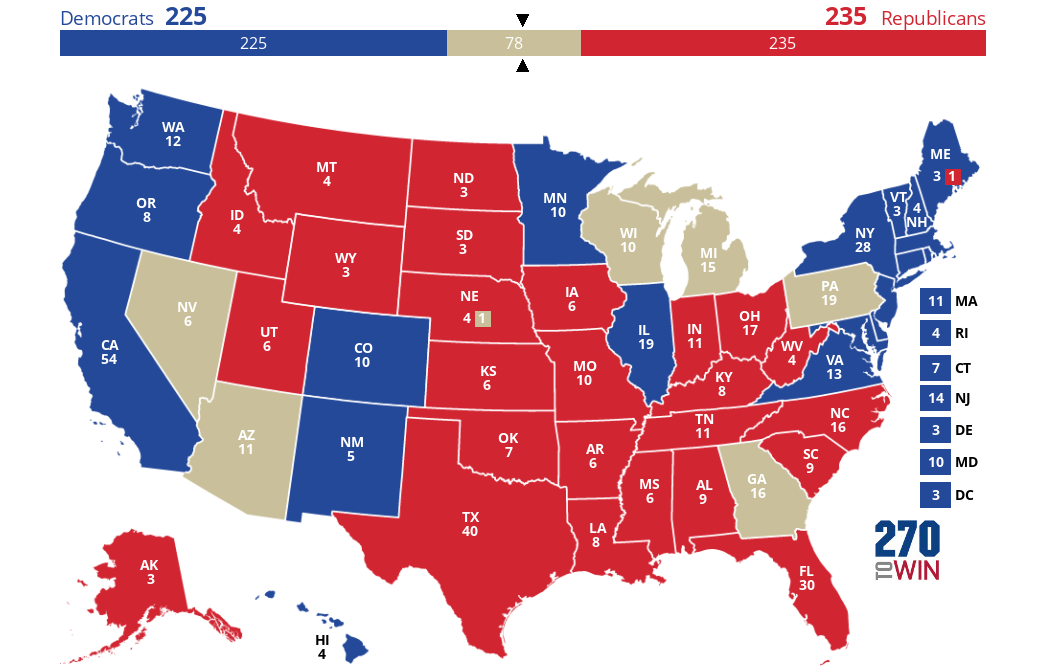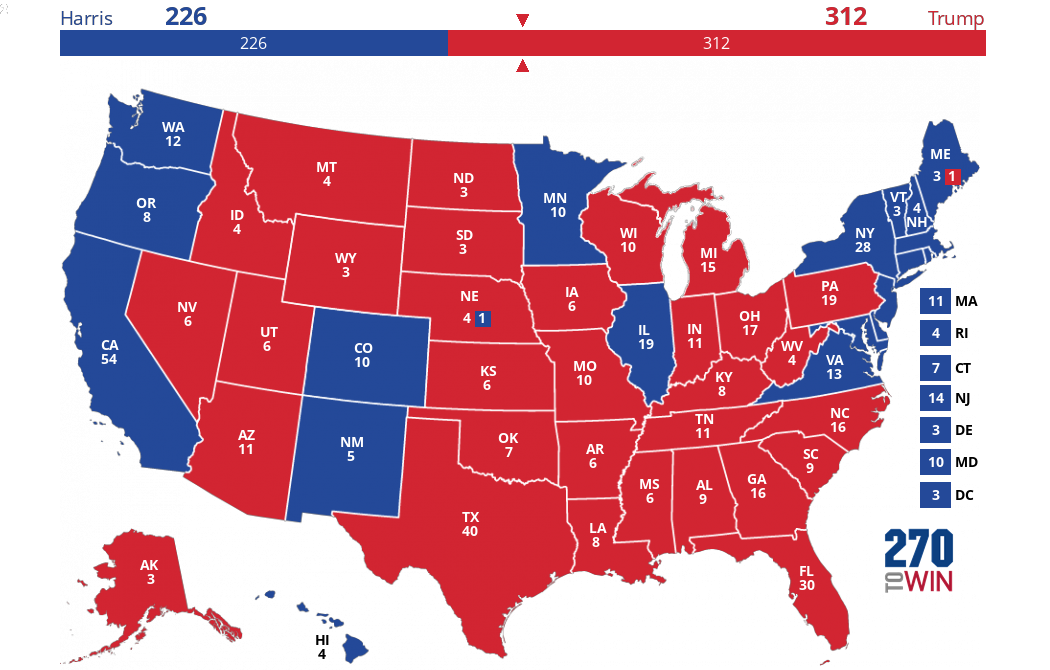Updated 'Same Since' Maps: Current Single Party Streak for Each State
By 270toWin Staff
January 22, 2021
The 'same since' series of electoral maps lets you see how far back in time each state has voted for a single party in presidential elections. We've updated for the 2020 election where Arizona and Georgia ended a Republican streak dating back to the 1990s.
The timeline goes from 1964 through the 2016 election. 1964 was the first year Washington, D.C. voted in a presidential election. It voted Democratic that year and every election since. The final map, for 2016, shows states that have voted the same in the most recent two elections. It reflects the five states + NE-2 that Joe Biden flipped to win the 2020 presidential election.
The image links to the 2016 map; you can view the full timeline here.
Here is the current streak for each state in tabular form:
| Year (Streak): Click for Interactive Map | Locations: Current Streak Begins |
| 1964 (15) | DC |
| 1968 (14) | AK, ID, KS, ND, NE except NE-2, OK, SD, UT, WY |
| 1976 (12) | MN |
| 1980 (11) | AL, MS, SC, TX |
| 1988 (9) | HI, MA, NY, OR, RI, WA |
| 1992 (8) | CA, CT, DE, MD, IL, ME except ME-2, NJ, VT |
| 1996 (7) | MT |
| 2000 (6) | AR, KY, LA, MO, TN, WV |
| 2004 (5) | NH |
| 2008 (4) | CO, NM, NV, VA |
| 2012 (3) | IN, NC |
| 2016 (2) | FL, IA, ME-2, OH |
| 2020 (1) | AZ, GA, MI, NE-2, PA, WI |


